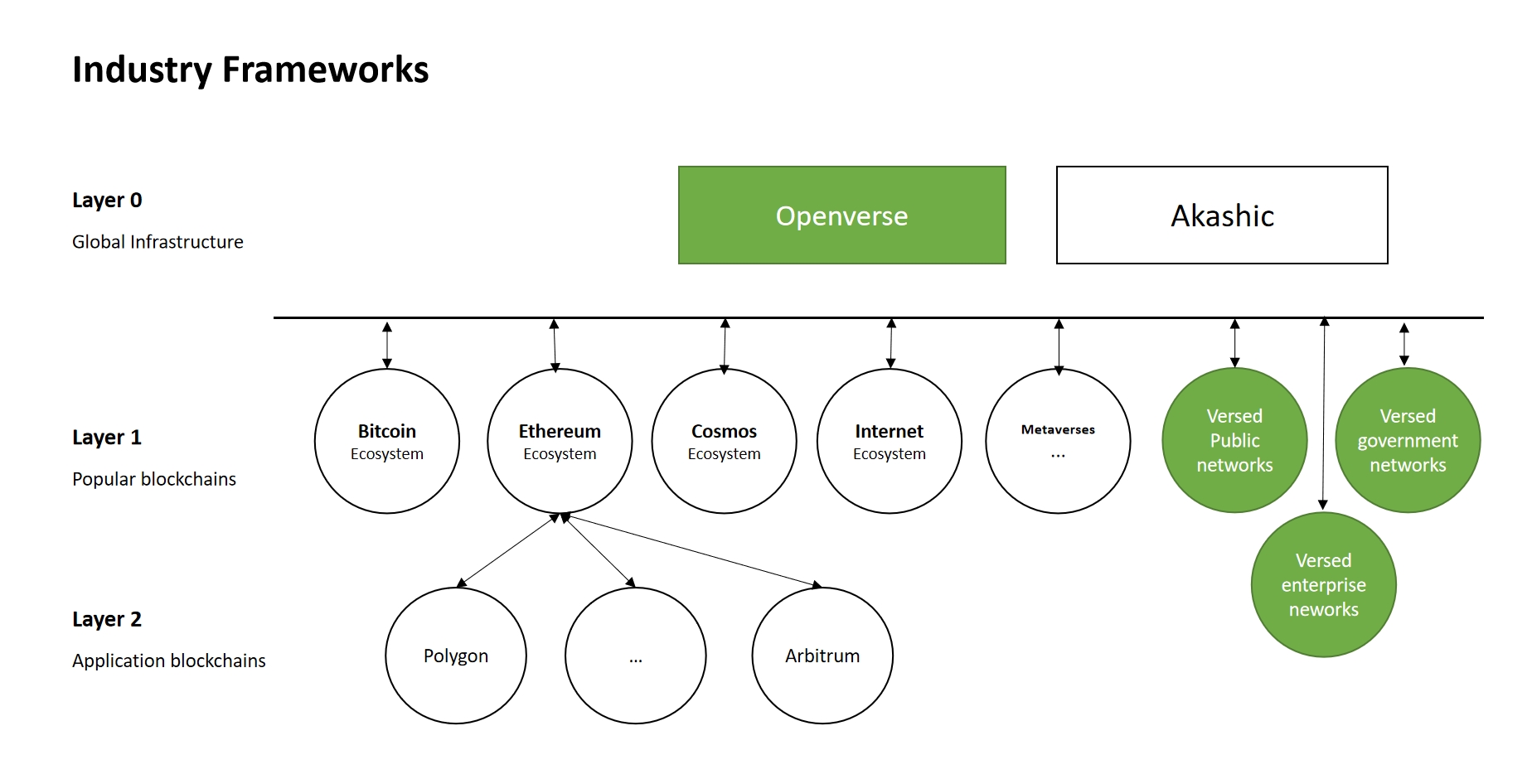Openverse is a Layer0 hub network based on blockchain technology. It is based on the existing blockchain technology and proposes the concept of "fully open protocol cross-chain". It will realize "the transmission of value (token/NFT/message) between different blockchains, metaverses and the traditional Internet is as simple as sending email".
Openverse has innovatively proposed protocol systems such as the "Bitcurrency VRC10 Protocol", "Privcurrency VRC11 Protocol", and "Public Currency Issurance Mechanism, PCIM". Based on the support of these protocols, Openverse will add important sub markets such as the issuance, trading, and payment of Bitcurrencies to the existing EVM public chain, promoting the universalization of Web3.
The earliest idea of the Openverse project originated from Dr. Bright's "Currency Public Issuance System" in 2014, which innovatively proposed a public competitive issuance mechanism for currency, Bitsecurity, and Bitcurrency. With the development of blockchain and Web3 technology, these ideas and designs are being put into practice in the main network and ecosystem of Openverse - we hope that Openverse will become a pioneer in the value internet.
In order to protect the environment and reduce Bitgold consumption, Openverse Network does not use the POW consensus mechanism but instead uses the DPOS consensus. Up to 100 verification nodes, as well as backup access nodes, will become the global Internet root server providing value. According to the Bitgold token allocation plan, creators and technical teams, civilian teams and institutions, and various sovereign countries will all become the owners of these root servers. Among them, sovereign countries can have 40 verification nodes, which will allow the entire value internet to be supervised and managed by the national government, with a weight of up to 40%.
Openverse is also an wide-open and ever-expanding infrastructure of inter-connected metaverses and blockchains, built for a decentralized future.
Before the openverse network, metaverses and blockchains were isolated and unable to communicate with each other. They were hard to build and could only handle a small number of transactions per second. Openverse solves some of the hardest blockchain problems of scalability, usability and interoperability.
Openverse is not a competitor to Ethereum. It embraces Ethereum. Some projects like Bridge allow you to bring ETH and ERC20 tokens over to the Openverse network and send Openverse IBC tokens into the Ethereum ecosystem. Other Openverse projects include Ethermint that brings the Ethereum Virtual Machine to Openverse and Sommelier Finance that reduces Ethereum transaction costs for decentralized finance (DeFi) applications.
At Openverse, we're building "The hub of blockchains" with the philosophy of "Value as the core, Unified standards and Complete openness". Join our growing network and plug into the most powerful metaverse infrastructure.
The Hub for Blockchains
Serving as the economic center of metaverses, the openverse network is a blockchain that provides vital services to the metaverses.Marketplace
Set to operate a next-gen decentralized exchange, swapping digital assets from across the Interchain, with very low fees and instant transaction confirmation.
Security provider
With the upcoming Interchain Security feature, Bitgold will soon be securing many chains, in exchange for additional staking rewards.
Router
The core mission of the openverse network – to connect chains by establishing IBC connections with compatible chains and operating decentralized bridges with chains like Ethereum and Bitcoin.
Custodian
Located at the crossroads of the Interchain, the network is extremely secure, the best place to hold digital assets and manage accounts across many chains.
Open Structure
The internet, blockchains and metauniverses can freely access the openverse network as the value exchange hub.


 English
English  日本語
日本語  Français
Français  简体中文
简体中文  繁体中文
繁体中文  한국어
한국어  Русский
Русский